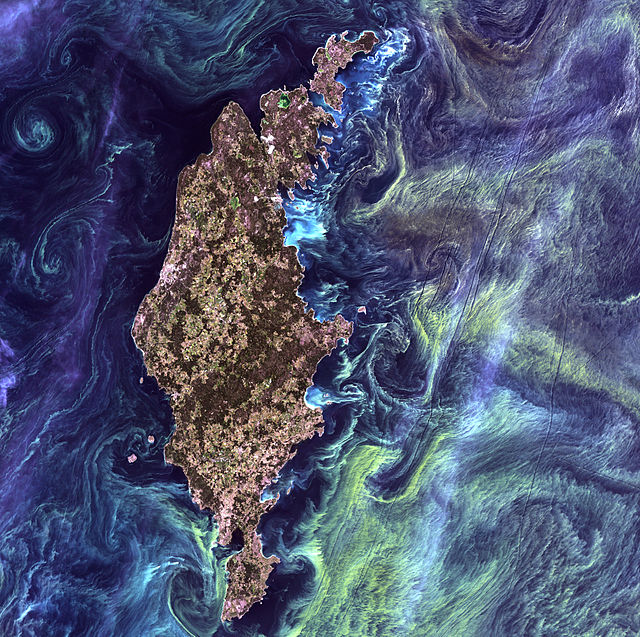
Unsustainable factory farming made the Baltic Sea one of the world’s most polluted seas. A really bad year was 2010 – unprecedented potentially toxic algae bloom used to cover almost 377,000 square kilometers, an area larger than all of Germany. This kind of widespread enhanced plant growth reduces dissolved oxygen in the water. This affects marine ecosystems and can cause significant disturbance to them.
A major source of this phenomenon is nutrients leaching from the huge amounts of manure produced in industrial livestock production, which contributes over 60-70% of diffuse and over half of total waterborne inputs there. Most of reactive nitrogen (ammonia) in airborne nitrogen deposition to Baltic Sea also originates from agriculture.
In particular, pig liquid manure creates a surplus of nutrients, much of which is sooner or later lost to water (nitrates and phosphates) and air (ammonia and nitrogen oxides).
The Baltic Marine Environment Protection Commission – Helsinki Commission (HELCOM) was established four decades ago to protect the marine environment of the Baltic Sea through international cooperation. HELCOM is alarmed that in 2010, the total water- and airborne input of nitrogen and phosphorus to the Baltic Sea was 977,000 tonnes of nitrogen and 38,300 tonnes of phosphorus, respectively. According to the Commission, the main contributors to nitrogen inputs were Poland (30%), Sweden (12%), and Russia (11%). The largest inputs of phosphorus originated from Poland (37%), Russia (16%) and Sweden (9%) (HELCOM 2010).
According to HELCOM, intensified development of factory farms of pigs, cattle, or poultry in the Baltic Sea catchment area has led to the development of a new segment of pollution point sources there. In 2011 the EU Commission sent the biggest polluter – Poland – a reasoned opinion concerning inadequate “implementation of nitrate vulnerable zones”. As a result in February 2013, Poland was referred by the European Commission to the European Court of Justice for “failure to comply with the Water Frame Directive in the national legislation”. European Nitrates Directive 91/676/EEC aims to protect water across the EU by preventing nitrates from agricultural sources polluting ground and surface waters and also by promoting the use of good farming practices. All Member States are obliged to designate areas vulnerable to nitrate pollution. They are required to adopt measures to reduce nitrogen pollution in those areas. The requirements include for example closed periods when manure and chemical fertilizers cannot be disposed of, a six months capacity for storing liquid manure when it cannot be spread, and limitations on fertilizer application.
According to the European Commission: “Excess levels of nitrates can damage freshwaters and the marine environment by promoting excessive growth of algae that chokes other life, a process known as eutrophication. Purifying excess nitrates from drinking water is also a very costly process.”
Read more on the Baltic and pig farming
More information on the Nitrates Directive
More information on the Water Framework Directive
More from Marek Kydra
- CAP direct payments to be reduced by 1.30% in 2015
- Soya – a problematic animal feed
- Polish farmer blockades against land grabbing
- 80 per cent of all antibiotics in the US given to healthy animals
- Russia bans pigmeat from all 28 EU member states
- Polish anti-fracking protesters joined “We are fed up!” demo
- Pig Industry “blatantly flouting European law”
- Sharp Allergy increase in rural Poland following EU membership
- Lithuanian Presidency secures agreement on food and animal feed
- Polish Agriculture Minister questions benefits of TTIP





